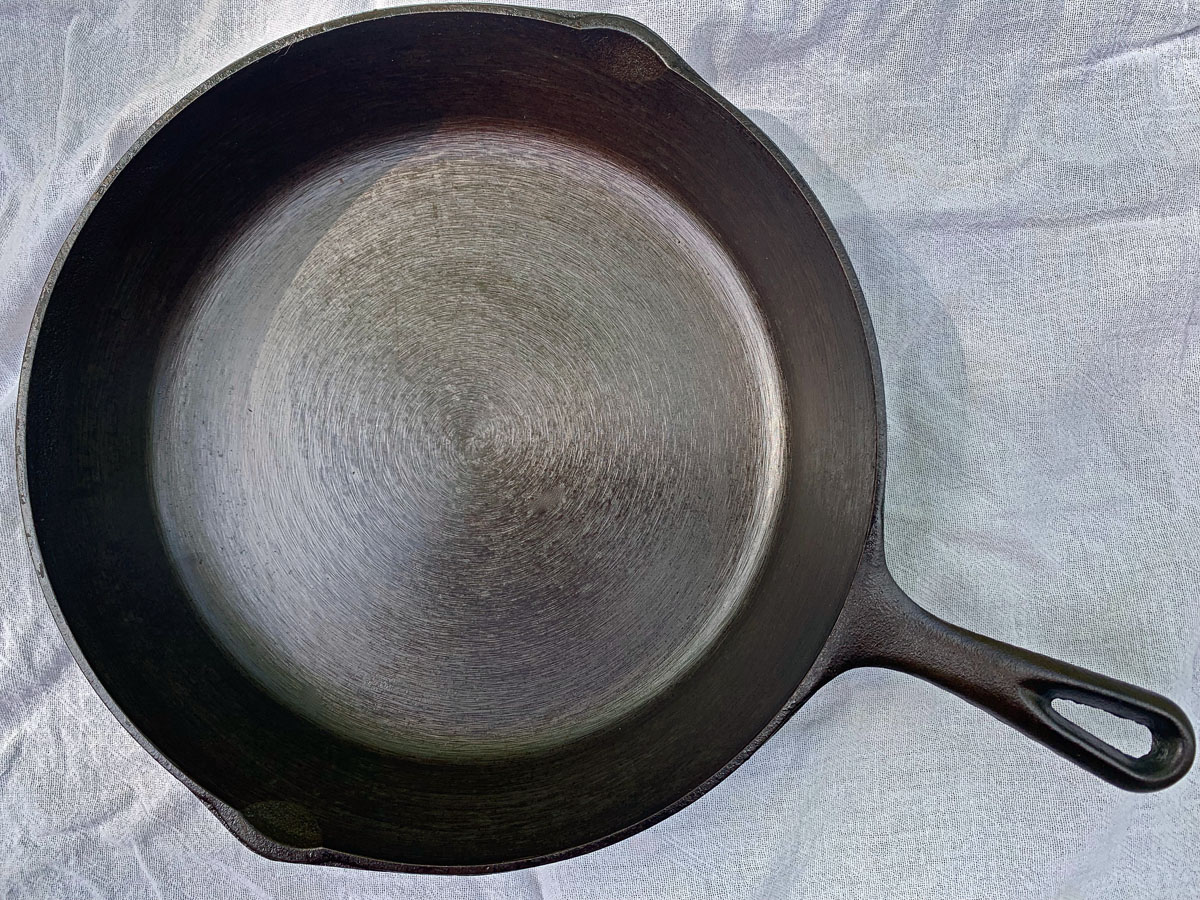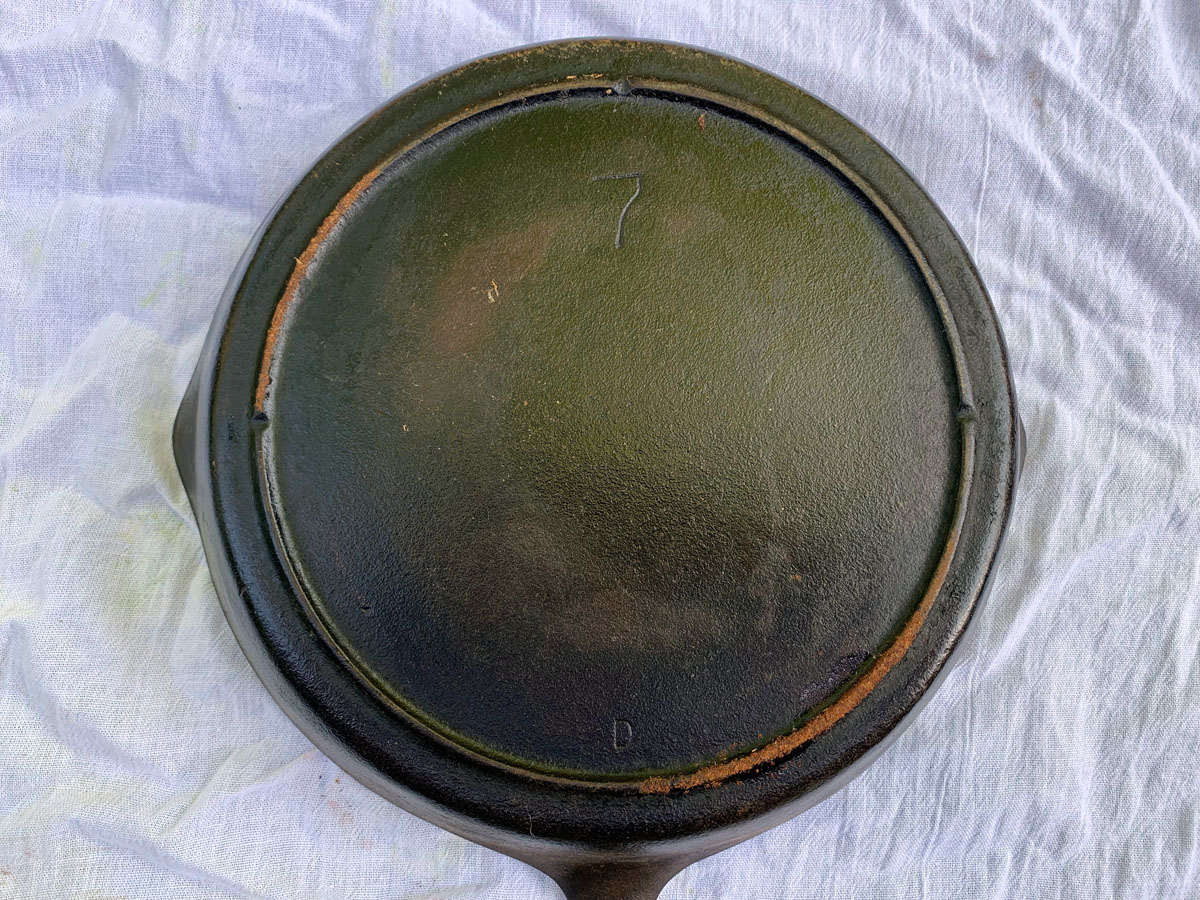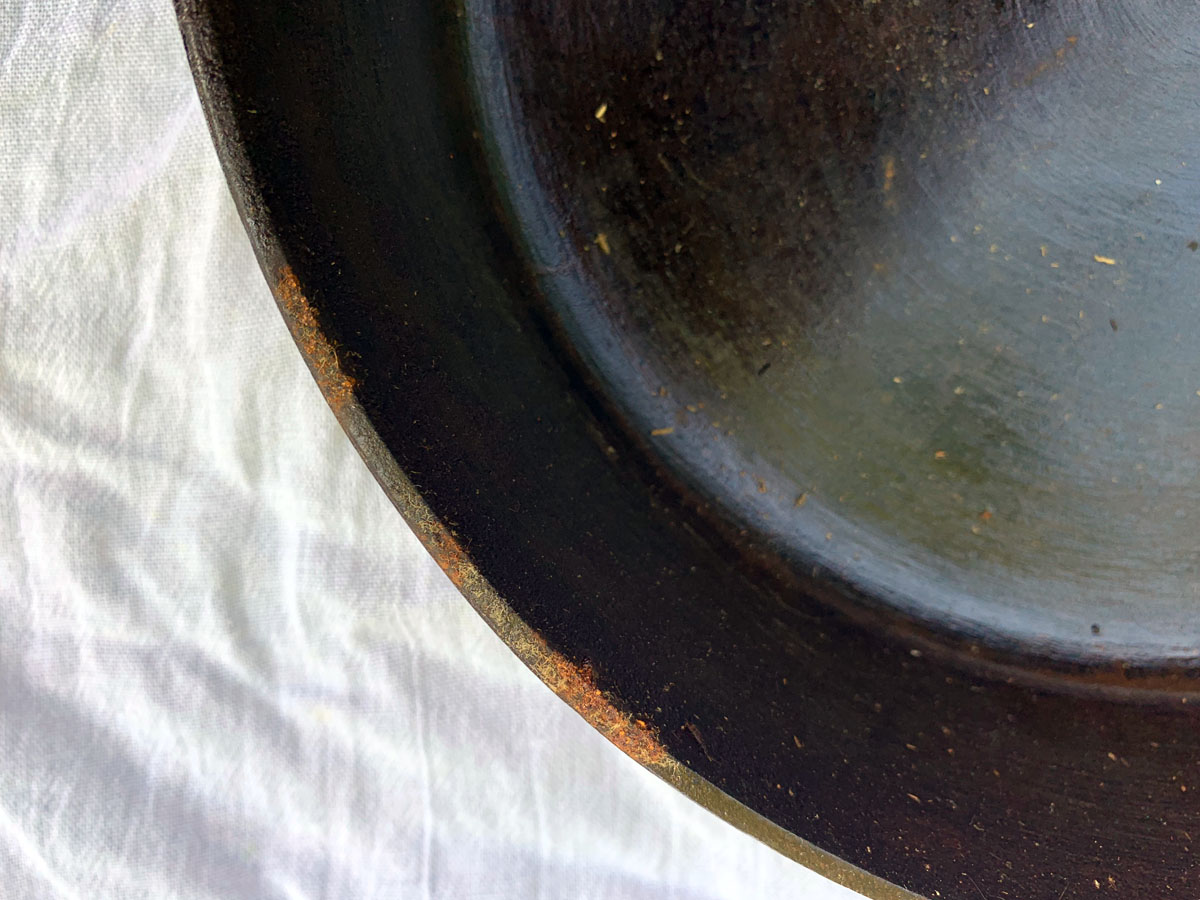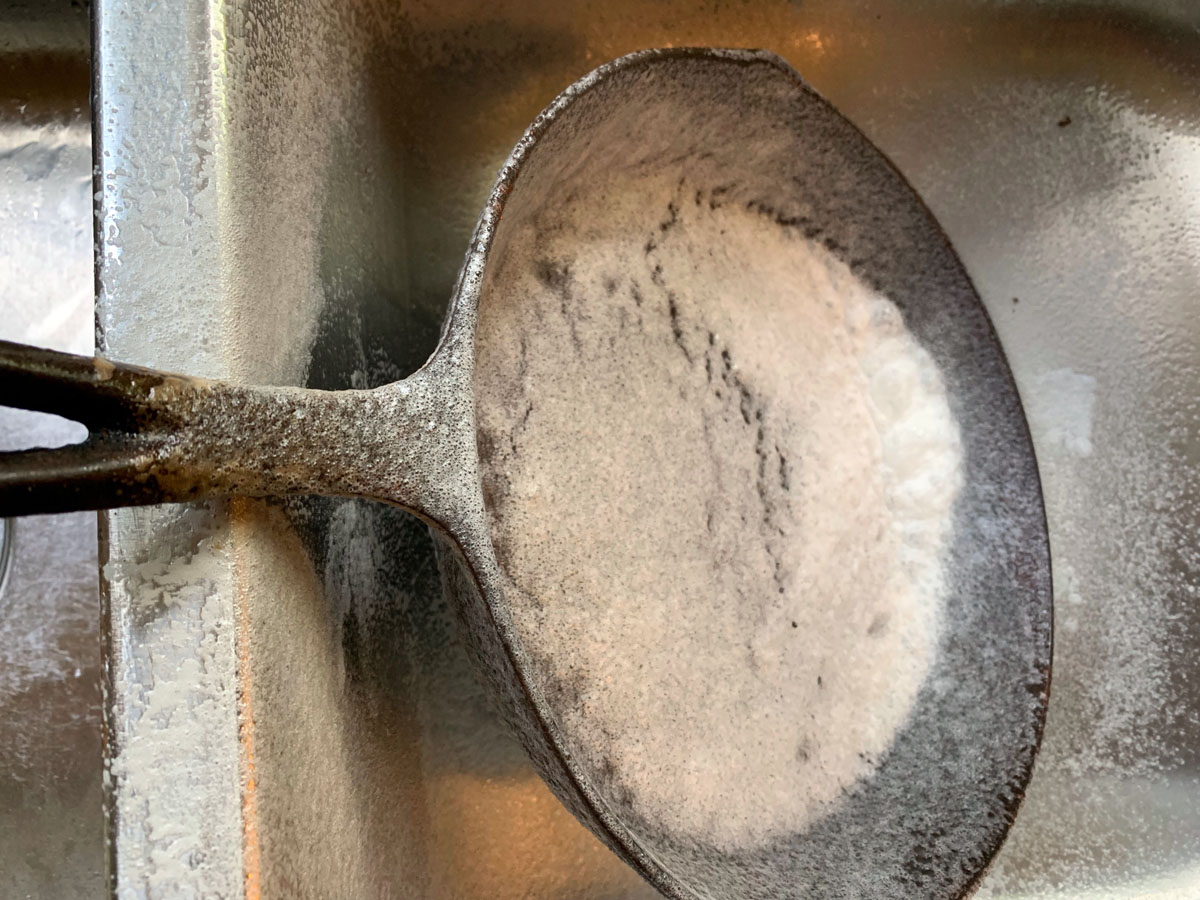
The 1940s skillet after stripping, scouring, and one seasoning treatment. It looks brand new!
I bought this vintage cast iron skillet at an antique shop in Stuart, Virginia, for $17. It’s a great skillet, and it was a good bargain, though it’s not as collectible as some vintage cast iron, which is very much a thing now. But, since I bought it to use, it would be hard to do better.
Back in March, I wrote here about my interest in returning to the iron age of cookware — chiefly cast iron for skillets and heavy copper for saucepans. But I also like Corning Visions glass pots for cooking with liquids, because glass is so inert.
Why do you want to cook with cast iron? Many people are returning to cast iron, after realizing that, properly seasoned, it’s the original non-stick cookware. The cast iron surface does not degrade if properly maintained, and so cast iron cookware is durable enough to become heirlooms (try that with Teflon).
If you look at vintage cast iron cookware on eBay, you’ll find that pieces made by the most respected manufacturers — Griswold and Wagner, for example — have become very valuable and very collectible. Why would anyone prefer the vintage cast iron cookware to the very good cast iron cookware manufactured today in the U.S. by Lodge?
The reason is a good one, actually. If you look at the surface of a new piece of Lodge ironware, you’ll see that it has a kind of sandy finish from the casting process. I believe it actually is cast in sand. Today’s Lodge ironware has not been polished, because polishing probably would double the cost. Most vintage ironware, however, has been polished. You can see the difference if you look closely.
If you look at the photo above, you’ll see that the cooking surface has a circular pattern. That pattern was made by a rotating polishing stone. That’s what you’re looking for in vintage ironware. The polished surface is smoother and makes the surface more non-stick than an unpolished sandy surface.
Because vintage ironware is a thing, if you Google you’ll find many good sources on how to restore and re-season old pieces and how to identify what you’ve found. After watching eBay for a while, I’d say that bargains are difficult to find there. Sellers know what they’ve got. You’re probably more likely to find vintage ironware at a good price in your local antique stores.
Notice that my new skillet is not stamped with the name of its manufacturer. However, there are some features that pretty conclusively identify the manufacturer and the date. There is no “Made in USA” stamp, which means that the skillet dates from the 1950s or earlier. The “7” is the size of the skillet. A No. 7 skillet is just over 10 inches wide at the top and is pretty much the right size to fit exactly on a large burner on a modern range. The “D” identifies the product type (though I don’t know what it stands for). But the identifying factors are the notches in the heat ring at 3, 9, and 12 o’clock. That makes it close to a certainty that this is a vintage Lodge skillet. It probably was made during the 1940s.
Lye, by the way, is very effective at stripping the old seasoning from a vintage skillet. Check the label, but most oven cleaners are made of lye. After stripping, the bare iron will be a kind of battleship gray. After seasoning, it will turn black. Though my new skillet had very minor amounts of rust, it wasn’t enough to cause a problem during restoration. Stripping and scouring (with steel wool) removed the rust. If you’re shopping for vintage ironware, watch out for pitting on the cooking surface or heavy rust — anything that makes the cooking surface less smooth. What you see in my top photo is pretty much ideal, if you’re buying the ironware to use for cooking. You’ll probably find that most old ironware has pitting or other damage. But with luck you may find an old jewel at a decent price.

How it looked when I brought it home — not bad!

The back of the skillet. Note the light rust after 4 o’clock and 9 o’clock, and the notches in the heat ring at 3, 9, and 12.



My mother owned several iron skillets and passed them on to her children. There is no substitute for cooking/baking in an iron skillet. You indeed ended up with a jewel.